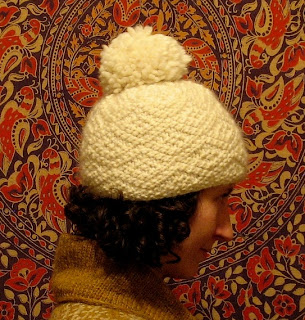There is nothing like the feeling of casting off that last stitch and weaving in the very last end. Often, that moment of purity lasts about five seconds before you realize that you need to block your project. Usually, this means waiting at least another whole day before you can proudly wear your garment in public. However, blocking can be a very rewarding exercise and often makes a major difference in the quality of your finished object. Here are some reasons to block and how to do it.
Reasons to block:
When natural fibres are wet, they become relaxed, allowing you to “shape” the fabric. This allows you to manipulate the form and size of your pieces (within reason, of course). Blocking also evens out your stitches, making your fabric smooth and more consistent. For lace projects, blocking opens up those stitches so the world can see all the hard work you’ve put in. Choosing a blocking method to match your project takes practice and intuition, but once you start blocking your projects, it’s hard to stop!
A note on fibre:
 |
| Cockleshells Scarf by Kelly McClure |
Blocking is most effective with natural fibres and non-superwash wool. Since superwash wools are chemically treated to retain their shape, they won’t alter much when wet – or, at least, they shouldn’t. Acrylics behave in much the same manner. Blocking might help “flatten” the piece out, but it won’t help with curling edges or retaining the shape. And unless melted plastic is part of your aesthetic vision, never iron acrylic yarn. Cotton will respond to blocking, but tends to sag and has no memory, so beware. Also be aware of wet blocking silk, cashmere, alpaca, and llama, as those fibres tend to become fragile in water. As a general rule, be very gentle! You can always block something with a little more fervor, but you can’t undo a mistake. Just to be sure, always read your yarn label washing instructions before casting on.
Steam block:
Turn on your iron and set it to the correct setting (wool, silk, or cotton). Lay your project out as flat as you can on your ironing board or on a towel on a hard, flat surface. Make sure your iron is clean, or, especially if it is a luxury fibre, place a thin towel over your project. Spritz your piece gently with a spray bottle of water and pat the water into the fibres. Gently run the iron over your fabric. Alternatively, you can dampen a thin towel and gently press the iron over your piece (press, don’t drag). If your iron has a steam setting, try holding it above the fabric (especially for luxury fibres) and steam without touching the yarn. Be aware of snags and edges since your iron can catch and pull on cables and embellishments. If you are steam blocking a lace project, you can either pin and then block, or block and then pin, depending on the fibre and pattern you’ve chosen.
 |
| Swallowtail Shawl by Evelyn A. Clark |
Wet block:
Soak your piece in a sink full of tepid water and add some wool wash or hair conditioner to soften up your fibres (and make your project smell loverly). Being careful not to make felt, give it a few good squeezes underwater to rid the fibres of air bubbles. Soak for 20-30 minutes. Carefully squeeze out as much water as you can without causing harm to your garment. Do not wring! You can rinse with the same temperature of water if you like, but most wool rinses can be left in. Set out a thick towel on a flat surface. Carefully lay out your project on your towel. Make sure your project is in exactly the shape and size you would like and make sure it is perfectly flat. Slowly “steam roll” your project in the towel ensuring it is flat and even. Squeeze the towel as much as you can to soak up the water. When you unroll it, place your garment on another dry towel or garbage bag, reshape, and leave flat to dry. Depending on the fibre, you can “fluff” it up in the dryer for a few minutes when it’s done (don’t forget about it!). If you are wet blocking a lace project, use (rust-proof) pins to keep it in place or invest in a set of blocking wires.
Extra tips:
· Be as gentle as possible when combining water and fibre – don’t agitate your wool while it’s wet or else you will end up with felt.
· You can block in pieces or after you’ve seamed them together – everyone has a favourite method. Stephanie Pearl-McPhee will block while the project is still on her needles!
· Always block your gauge swatch before you begin knitting.
· Add buttons, notions and/or appliques post-blocking.
· Add some vinegar to your soaking bath if you are worried about colour fastness.
· Use blocking wires to give shape to lace projects.
· Weave in your ends before you block, but trim them post blocking.
· Don’t forget that you can always re-block something.
This article originally appeared in the Knit and Caboodle April 2011 newsletter.








